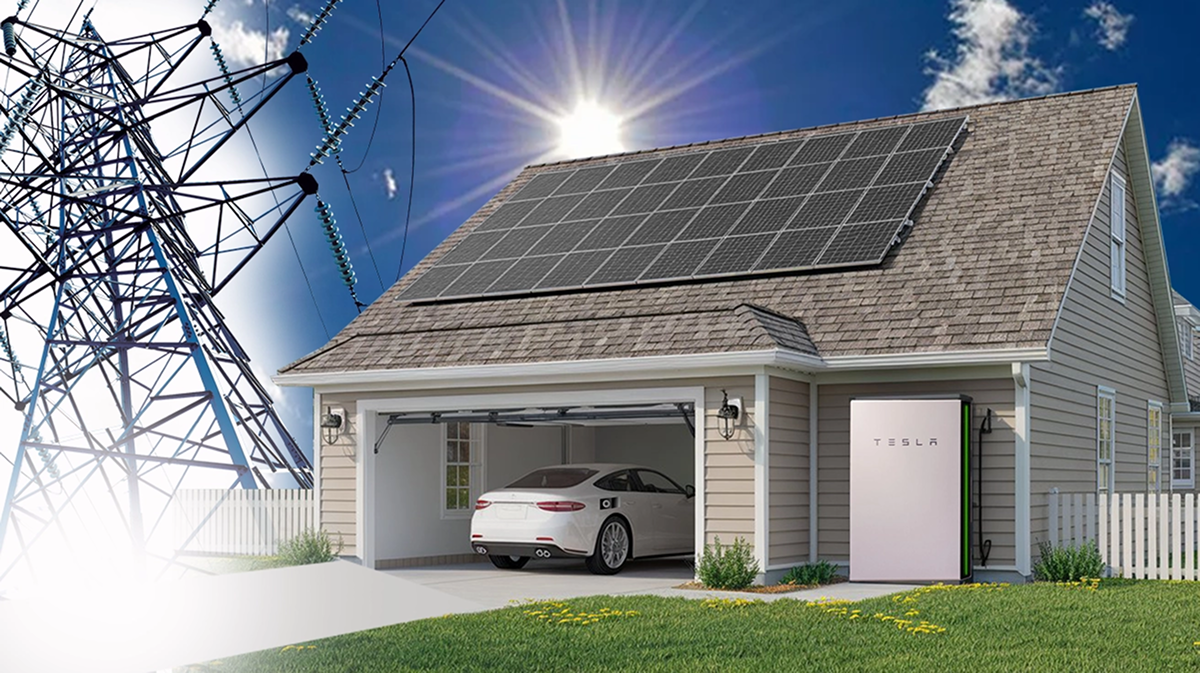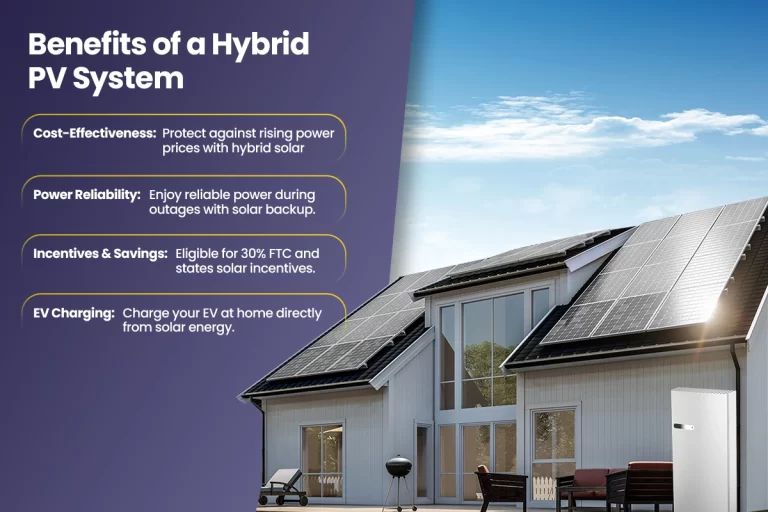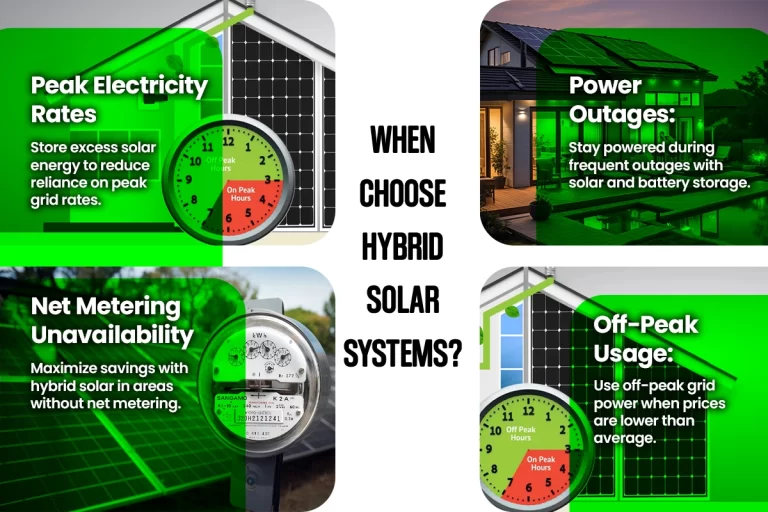- Updated On: March 13, 2025
Hybrid Solar System: A Complete Guide

What is a hybrid solar system?
Typically, hybrid systems integrate solar panels with charge controllers, batteries, and inverters like off-grid systems, as well as a grid-tied interface.This system allows homeowners to store excess energy in batteries for use during cloudy days or nighttime while also drawing power from the grid when needed. The hybrid inverter is a battery and inverter combination designed to enable you to choose when to be on the grid or off.
How does a hybrid system
work?
A solar hybrid system intelligently switches between grid electricity, and battery storage power. It helps you to save money on your bills by avoiding using the grid power during peak hours.
Generally, this system includes one or more controllers that let you send excess solar energy from your panels to the grid or your backup battery solution. Also, you can prioritize charging your battery first and send power to the grid only when it is full.

What are the components of a solar hybrid system?
A hybrid solar system consists of several essential components that work together to generate and store electricity from the sun. These components include solar panels, a DCDB (Direct Current Distribution Box), One or multiple Charge Controllers, an Alternating Current Distribution Box and backup batteries like Tesla Powerwall 3.
What are the benefits of a hybrid PV system?
Solar with battery storage system is an excellent choice for you if you prioritize powering your home by backup solar power during outages Also, they are beneficial if your utility provider has time-of-use rates, demand charges, or does not offer a net metering policy. For optimal solar savings on monthly electricity bills, this system can manage the time of use rates. Other benefits include:

Cost-Effectiveness
With a hybrid solar system, you may protect yourself from future power price hikes and lock in low to zero bills for years to come. Additionally, it lets you control time-of-use rates to save as much money as possible on your electricity bills.
Reduce the Risk of Outages
During a grid interruption, hybrid solar ensures a power supply to run your home essentials. With frequent power outages due to bad weather conditions, having a home solar with battery backup provides you with peace of mind.
Applicable for Solar Incentives and Rebates
Like on-grid or off-grid PVs, solar hybrid panels also qualify for a 30% federal solar tax credit. Additionally, the local solar incentives also support offsetting the upfront solar installation cost.
EV Charging at Home
Home-based EV charging allows you to even charge it directly from solar batteries if you have solar panels along with their battery banks. Not only this, with bidirectional chargers, it is even now possible to charge your solar batteries from your EVs during peak hours or long power outages.
When does a hybrid solar system really make sense?
Here are several scenarios where hybrid systems are the most sensible choice:
1. Unavailability of Net Metering
If your utility does not have any policy for surplus solar electricity, solar-plus-storage systems are a very good option. For example, if your utility does not offer retail rate net metering for solar, you may not receive a full bill credit for solar electricity that you return to the grid. According to Solar Net Metering 2.0, new solar homes in California will be enrolled in time-of-use tariffs with their utility. Therefore, the credit you receive will change based on the time of day; credits with larger values are typically awarded for electricity sent during peak hours.
2. Applicable Peak Electricity Rates
Installing a hybrid solar system can be a very smart way to maximize off-peak electricity prices. This means that when your solar panels are producing excess power, you can store it in your home battery storage or send it to the grid, depending on the peak pricing. Also, you can use grid electricity when prices are lower than the market average during off-peak hours. For instance, during the summer, when panel production is maximum but energy use is also high, you can store all excess energy in your batteries to reduce your reliance on the grid when energy prices are rising.
3. Areas of Frequent Power Outages

If you live in areas with frequent and long power outages, a solar panel hybrid system is the only power solution for you. With solar + battery, you will minimize your reliance on the grid and stay powered during outages. Also, with smart panel installations like SPAN, you can even control and manage your priority loads making your home energy efficient.
With solar technology advancement, high-efficiency panels, and reliable battery backups like the Tesla Powerwall 3, installing a hybrid solar system in 2025 is a smart investment. As soon as you install solar with battery storage, you can protect yourself from high energy bills, and long power outages in extreme weather and get power independence and solar savings for the future. Also, with favorable incentives, it is now more affordable to equip your home with a solar battery storage system.
Contact a trusted solar installer like Solar SME for the best solar and backup solutions to meet your energy needs. Get a FREE Quote and estimate your savings NOW!
Related Articles:
The trend of energy efficient smart homes is booming in the U.S. as residents are more conscious towards power independence and energy management.
Are you exploring options for reducing your reliance on the grid? Are you living in remote locations, like a cabin in the woods or an area that isn’t connected to the grid yet?
Due to this growing issue, people now look for alternative power sources. But the common dilemma is solar battery vs generator: which one is best for you? Explore the pros and cons of both options and analyze both on the basis of some major factors!



